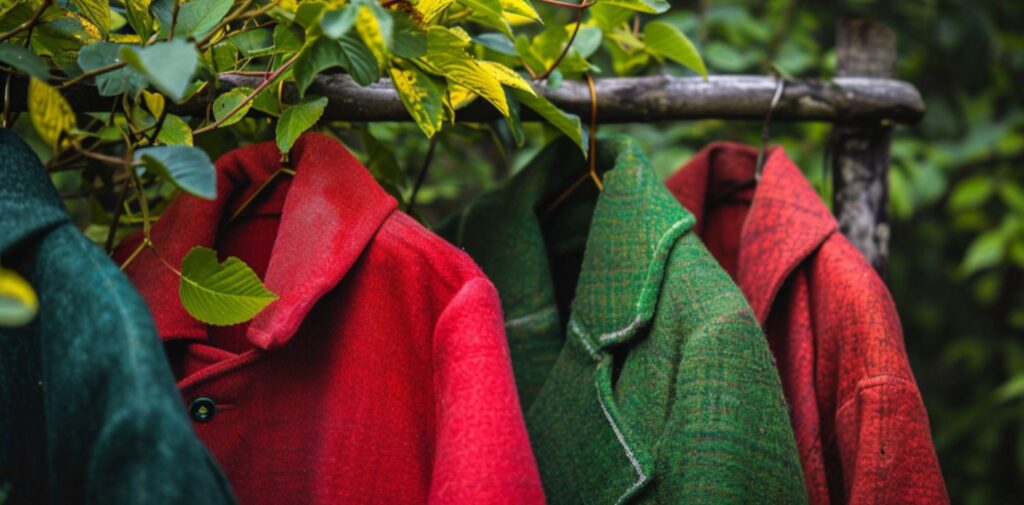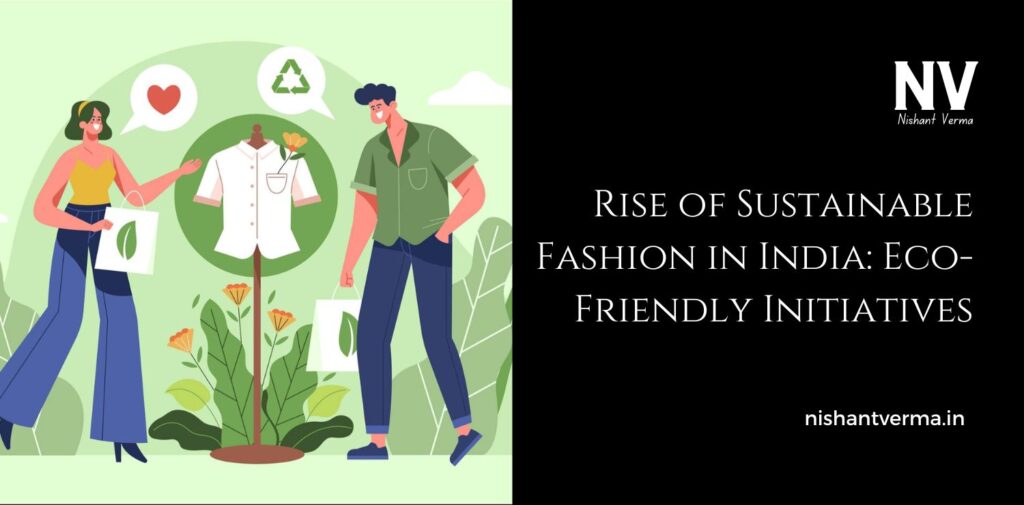In recent years, there has been a big change in how people think about clothes. While many of us love buying new clothes and following the latest trends, we have also started to realize the impact that fashion can have on our planet. The fashion industry is one of the biggest polluters in the world. From the production of clothes to their disposal, fashion can harm the environment in many ways. That’s why many people are now turning to something called sustainable fashion, which focuses on creating clothes that are good for the Earth.
In India, this trend is slowly growing, and many fashion designers, brands, and even customers are becoming more aware of how important it is to make fashion eco-friendly. Let’s take a closer look at what sustainable fashion means in India, the eco-friendly initiatives that are taking place, and how this trend is shaping the future of the fashion industry.
What is Sustainable Fashion?
Before we talk about the rise of sustainable fashion in India, let’s understand what sustainable fashion means. Simply put, it’s fashion that is created with a focus on protecting the environment and supporting ethical practices. Instead of mass-producing clothes that are thrown away after a few months, sustainable fashion focuses on using natural, recyclable, and eco-friendly materials. It also aims to reduce waste, energy, and water use, and improve the working conditions for people who make the clothes.
There are several key principles of sustainable fashion:
- Eco-friendly materials: Using fabrics that are not harmful to the environment, such as organic cotton, bamboo, or recycled fabrics.
- Fair wages and safe working conditions: Ensuring that workers are treated fairly and paid well.
- Reducing waste: Creating clothes that last longer and can be recycled instead of thrown away.
- Energy and water conservation: Making clothes in a way that uses less water and energy.

The Growth of Sustainable Fashion in India
In India, sustainable fashion is still a relatively new concept, but it’s growing fast. Many Indian designers and brands are starting to realize that people care about the environment and are willing to support businesses that make eco-friendly clothes. As more people understand the importance of sustainability, they are also looking for ways to reduce their environmental impact.
In India, there is a long history of using natural materials and traditional techniques in clothing. For example, fabrics like khadi (a hand-woven fabric) have been used for centuries. The spirit of sustainable fashion in India is linked to these traditional methods, where local artisans create clothing in an eco-friendly way. Today, many modern designers are combining these traditional techniques with new ideas to create sustainable fashion.
Eco-Friendly Initiatives in the Indian Fashion Industry
Many eco-friendly initiatives are being introduced in India’s fashion industry to make it more sustainable. Let’s look at some of these efforts:
Use of Organic and Natural Fabrics
One of the most important steps in sustainable fashion is using materials that are good for the planet. Organic cotton, bamboo, hemp, and silk are some examples of materials that are more eco-friendly than regular fabrics. These materials are grown without the use of harmful pesticides and chemicals, which can damage the soil and the environment.
In India, many designers and brands are using these materials to create eco-friendly clothes. For example, FabIndia is a well-known brand that uses organic cotton and natural dyes in its clothing. Another example is Blabel, a fashion brand that works with organic fabrics and uses handloom weaving techniques to make its clothes.
Recycling and Upcycling Clothes
Recycling and upcycling are two important practices in sustainable fashion. Upcycling means taking old clothes and turning them into something new, rather than throwing them away. This helps to reduce the amount of waste created by fast fashion.
In India, some brands and designers are making fashion out of recycled materials. For instance, Doodlage is a brand that focuses on using fabric waste from factories to create stylish clothing. Instead of letting these fabric scraps go to waste, they turn them into beautiful, unique clothes. This reduces the amount of fabric that ends up in landfills and gives old clothes a new life.
Supporting Local Artisans and Craftsmen
India has a rich tradition of handicrafts and handwoven fabrics. Many sustainable fashion brands are now focusing on working with local artisans to create clothes. By supporting these skilled craftsmen, sustainable fashion brands help to preserve traditional techniques, while also providing fair wages to the artisans.
For example, Khadi India is a government-backed brand that promotes the use of khadi, a hand-spun and handwoven fabric made by local artisans. By buying khadi, customers not only support sustainable fashion, but they also help to support small-scale weavers and farmers across the country.

Sustainable Fashion Shows and Events
To promote sustainable fashion, India has started hosting fashion events and shows that focus on eco-friendly clothing. These events bring together designers, brands, and customers to showcase sustainable collections and raise awareness about the importance of eco-friendly fashion.
One popular event is the Lakmé Fashion Week, where designers have started to include sustainable fashion collections. For example, many designers now present collections made from natural fabrics, recycled materials, or using fair-trade practices. These shows help to highlight the importance of sustainable fashion to a larger audience and encourage more people to buy eco-friendly clothes.
Slow Fashion Movement
The slow fashion movement is a global trend that encourages people to buy fewer, better-quality clothes. In India, the slow fashion movement is gaining popularity, with people becoming more aware of the harmful effects of fast fashion, such as mass production and cheap, low-quality materials.
Many Indian consumers are now turning to local, handmade clothing, which is made with care and attention. These clothes are often more expensive than fast fashion, but they last longer and are made with better materials. By supporting slow fashion, consumers help to reduce the demand for mass-produced, low-quality clothes that harm the environment.
Challenges Facing Sustainable Fashion in India
While sustainable fashion is growing in India, it still faces several challenges. One of the biggest challenges is the cost of eco-friendly materials. Organic cotton, recycled fabrics, and other sustainable materials are often more expensive than regular fabrics. As a result, sustainable fashion brands may have higher production costs, which can make their clothes more expensive for consumers.
Another challenge is the lack of awareness. Many people in India still do not know much about sustainable fashion and may not understand why it is important. Fast fashion is still popular, and people often choose cheap, trendy clothes without thinking about their environmental impact. Educating consumers about the benefits of sustainable fashion is key to making this trend more widespread.
Additionally, the fashion industry in India is still largely unregulated when it comes to sustainability. Many brands may claim to be eco-friendly, but without clear guidelines or certifications, it can be difficult for consumers to know which brands are truly sustainable.

The Future of Sustainable Fashion in India
The future of sustainable fashion in India looks bright. As more people become aware of the environmental impact of their choices, the demand for eco-friendly clothes is expected to grow. With the rise of online shopping, it has become easier for sustainable brands to reach a larger audience and educate consumers about the importance of eco-friendly fashion.
Many young designers are also embracing sustainability as a core part of their brand identity. They are using innovative techniques, such as 3D printing and waste-reducing production methods, to create clothes that are stylish, sustainable, and ethical. These new ideas will help to drive the future of sustainable fashion in India.
Consumers also play a big role in this change. By supporting sustainable brands and choosing eco-friendly clothes, we can help to make fashion more sustainable for future generations.
Conclusion
Sustainable fashion is slowly but surely making its way into India. As people become more aware of the impact of fast fashion on the environment, many are turning to eco-friendly alternatives. With the support of local artisans, the use of organic materials, and the rise of slow fashion, India’s fashion industry is moving towards a greener future.
While there are challenges to overcome, such as the cost of sustainable fabrics and the need for more awareness, the growth of eco-friendly initiatives in Indian fashion is an exciting step towards a more sustainable world. By making conscious choices, both designers and consumers can help protect the planet and ensure a better future for the generations to come.




